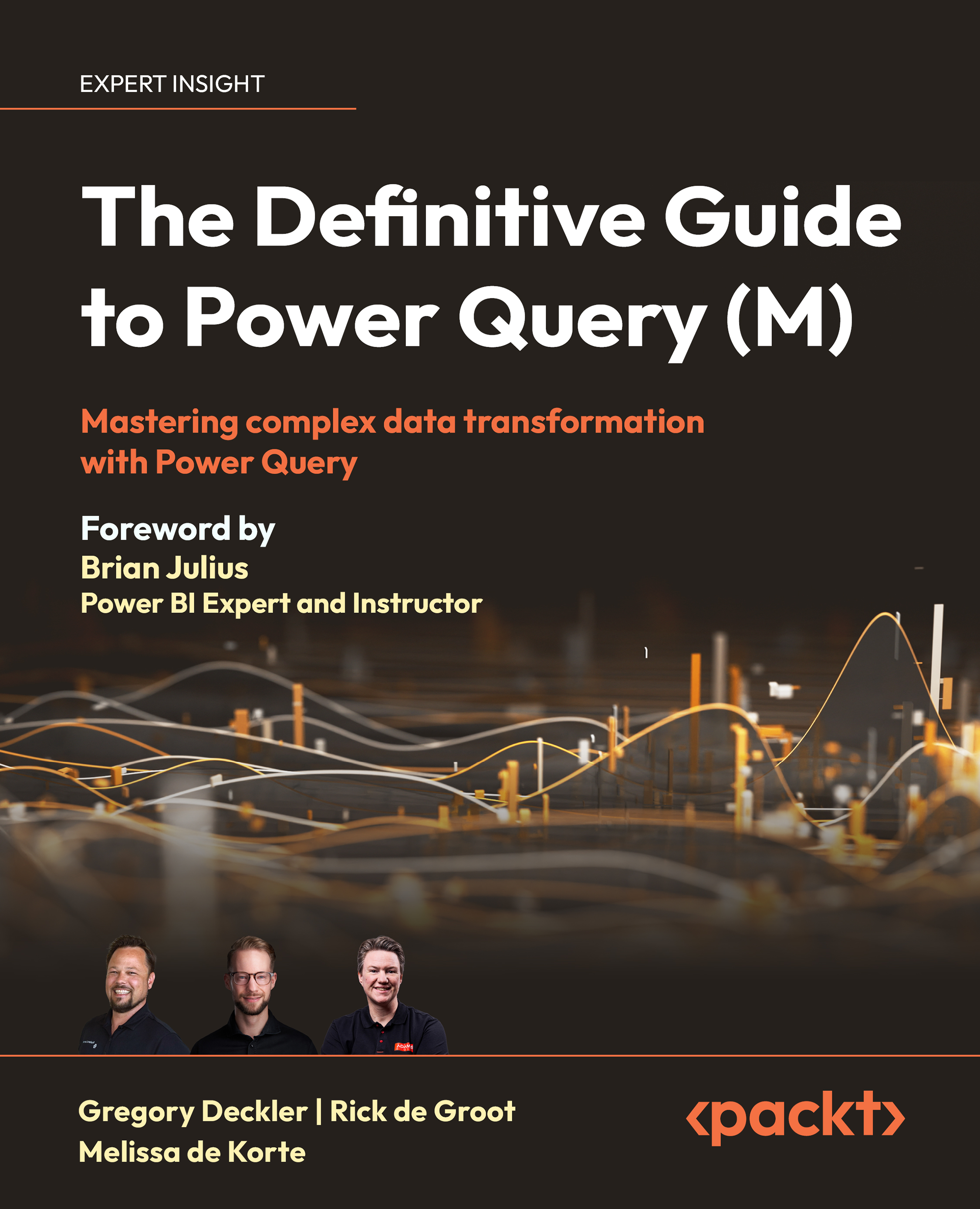Parameters
Parameters in Power Query play an important role in making queries dynamic. Think of them as variables that you can tweak to change the behavior of your queries. As you go through this chapter, you’ll discover how parameters are a useful building block for storing and managing values. We will delve into what they are, how you can create one, and look at where and how to use them.
Understanding parameters
Parameters are placeholders that make it easy to adapt and manage your queries. They allow for the input of scalar values like dates, numbers, or text, without the need to hardcode these values directly into the queries. This design enables you to make external modifications to a single parameter, which then automatically propagates updates across multiple queries or steps within a query.
Typical use cases for using parameters provide flexibility by allowing a user to:
- Choose a server and database name. This allows users to switch between development...
































































